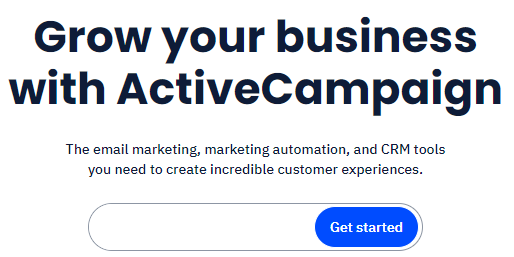What are digital products
Digital products are assets, items, or experiences that can be sold and distributed online. They are not physically manufactured, but are created through programming or by using existing software and adding your own intellectual property.
Advantages of digital products
- Low overhead: Unlike a physical product, which needs manufacturing and shipping, virtual products are often cheaper to produce and sell. For example, a physical book needs printing, binding, and shipping. An eBook doesn’t.
- Scalable: Digital products are often more scalable than physical ones. If you create and sell an online course, you can sell it to 50 or 5,000 people.
- Easy to build: Early digital products were time-consuming and often required a lot of custom development. But we’re living in an age of white-label and premade platforms that offer you a ton of ready-made options for building products.
- No shipping: Digital products don’t require shipping. Fulfillment is done online.
- Easy discounts: If you offer a discount on physical products, there’s a chance you’re cutting into your bottom line – your profits. When you offer a discount on a digital product, you’re usually just going to sell more of something that won’t cost you any extra to make anyway.
How to make money selling digital products
Our intention with this guide is to provide you with a practical plan for earning income by selling digital products. These steps have proven successful for numerous Mighty Hosts, several of whom have established prosperous businesses generating six and seven-figure profits!
Step 1: Figure out your ideal user
In the process of creating a digital product, determining the target audience is an initial and crucial step. Avoid the temptation to develop a product that caters to a broad spectrum of individuals. Remember the popular saying: “the key to success lies in finding a specific market.” This saying remains accurate even today.
To increase the chances of selling your product, it is important to be more precise about the target audience. For instance, when selling courses and memberships, it is beneficial to create a profile of an ideal member.
In order to discover your perfect student, user, customer, or member, you can inquire about a few questions:
- Who are the people who most need what you have?
- What does your digital product do for them?
- What are the struggles, pains, questions, or dreams you can help them with?
- What type of people are they? (demographics)
- How much are they willing to pay for a solution?
To find your Ideal Member, it is recommended to conduct interviews with individuals who could potentially be a good match for your digital product. Engage in conversations with approximately 15-20 people in order to gather responses to the aforementioned inquiries.
Step 2. Identify the type of product they need
After determining your target audience for the digital product, you can proceed with determining the appropriate product type. Consider their specific requirements and ensure that your product adequately addresses those requirements, aligning with their lifestyle.
If you want to teach someone how to live a more active lifestyle, a 20-minute webinar is not sufficient. However, creating a membership community will provide your members with lasting value, assistance, and accountability.
To ensure that people achieve results, select the product you will require.
Step 3. Figure out your creative style
What are your areas of expertise? What unique talents do you possess that could complement the product you’re developing? Make sure the product aligns with your personal style as well.
- If you’re a gifted speaker, a webinar might be best.
- If you are a gifted coach, maybe you should be working one-on-one with people.
- If you’re great at coding, maybe you should build an app or tool.
Please analyze your individual skills and abilities in order to assist individuals in resolving problems, and opt for something that aligns with your strengths. The list has been categorized based on skills and abilities, making it effortless to locate a suitable option.
Step 4. Choose a profitable business model
To make money selling digital products, it is vital to select a lucrative business model. Although there is no universally effective model, considering certain aspects from the beginning will enhance your likelihood of earning a profit.
- Price what it’s worth: Pricing can always be a bit scary, especially for a first-time entrepreneur. Most first-timers are tempted to charge too little. But this means you don’t earn enough to be profitable. ALSO, we’ve learned from communities and courses that charging more helps your members succeed. It’s easy to forget about a course you paid $12 for. You need people to have skin in the game.
- Keep your overhead low: It’s easy to get caught up in the coolest marketing tools, nifty customizations, fancy cameras, or the highest-end builders. But if you can keep your costs low at first, you’ll increase profitability and prove the model. You can always spend on more tech goodies as you grow.
- Recurring revenue: While it’s not always possible, if you can create a product that brings you recurring revenue you are well on your way to a profitable business model. Products that require payments again and again (e.g. a membership) can be really lucrative.
- Pre-sell: A lot of people will say, ”That’s a great idea for a product!” But that doesn’t mean they’ll fork over the cash to pay for it. One great way to make sure your digital course will be profitable is to pre-sell it before you launch it. If people are willing to pay upfront, you know you’ve got the revenue locked in!
Step 5. Choose your tech
Every digital product development and delivery process involves technology. We won’t dive into the various options and specifics in this article, but we will provide links to other articles that can provide you with some insights.
Step 6. Build and launch your digital product
Afterward, proceed to create your product using the platform you prefer!
Best digital product to sell online and earn money
Do you feel prepared to begin your online selling journey? Are you seeking suggestions on potential options that could be suitable for you? The online market offers a plethora of digital products for sale; however, due to time constraints, we cannot go over all of them. In lieu of that, we will focus on outlining the most successful digital products. By selecting one of these options, you are highly unlikely to make a poor decision!
Software and applications
In 2021, the global software development market had a value of $429.59 billion. There is an anticipated growth rate of 11.7% from 2022 to 2030. Ahrefs and Mailchimp, among other companies, are generating substantial revenues through the sale of SaaS (software-as-a-service).
Selling software is more challenging compared to other digital products listed here. However, if you possess coding expertise to develop exceptional solutions, these products can yield significant profits. Software applications encompass various forms such as mobile apps, desktop software, web apps, games, SaaS services, and more.
SureTriggers is a writing assistant that you can subscribe to and use by paying a monthly fee, making it a excellent example of this product category.
Productivity tools are to be thought of step by step. Do not include additional information and refrain from omitting any information.
According to a survey from salary.com, 89% of workers use social media and personal emails during work hours, indicating that productivity tools like Trello and Asana can serve as great sources of inspiration. Creating a productivity tool that aids users in staying focused and decreasing their time spent on non-work related tasks could potentially yield significant financial gains, as productivity tools rank among the most actively sold digital products.
When endeavoring to create productivity tools, it is important to contemplate numerous categories. Will it primarily function as a tool for enhancing task management, or is it intended to be a time-tracking tool? Alternatively, does it aim to facilitate communication and collaboration among users? Another possibility is that it serves to aid users in maintaining focus and boosting productivity.
Any of these tools have the potential to gain a lot of popularity.
Graphic design software
Graphic design software like Adobe Photoshop, Adobe Illustrator, Canva, and SketchUp are widely known and used. These software options can be purchased on a subscription basis or as a one-time payment. Developing such software may require a team of professionals, but with the necessary skills, a skilled developer can achieve this goal.
Accounting and invoicing software
By 2026, it is projected that the global accounting software market will achieve a value of $20.10 billion. Some notable examples in this market include QuickBooks, Xero, FreshBooks, and Wave.
WordPress plugins and themes
If you have a passion for WordPress and coding skills, one more exceptional method to earn money from digital products is by developing a plugin or theme. Plugins are able to address typical issues or enhance functionalities, while themes offer visually appealing designs for individuals who lack design expertise.
Each of them can be easily created and then marketed directly on WordPress.com, or on your own website or store, or even on WordPress marketplaces, in a relatively short amount of time.
Online courses and tutorials
By creating an online course, you have the opportunity to transform your existing expertise into a means of generating income. If you possess a skill and knowledge that you believe would be advantageous to others, you can generate revenue by offering online courses.
By following a step-by-step approach, you can assist individuals in acquiring new skills, gaining knowledge, and enhancing their professional growth. Regardless of your geographical location or the time at hand, you have the opportunity to offer learners a diverse range of subjects and expertise.
By 2026, the global eLearning market is projected to reach $374.3 billion, exhibiting a growth rate of 9.1% from 2021 to 2026. To begin, you can contribute to this market by sharing your expertise and creating educational content in your area of knowledge.
SureMembers allows for easy selling of online courses and tutorials, whether you choose to sell them through a membership model, one-time pricing, per course pricing, or a monthly subscription.


